Scrotal Pain & Swelling
advertisement
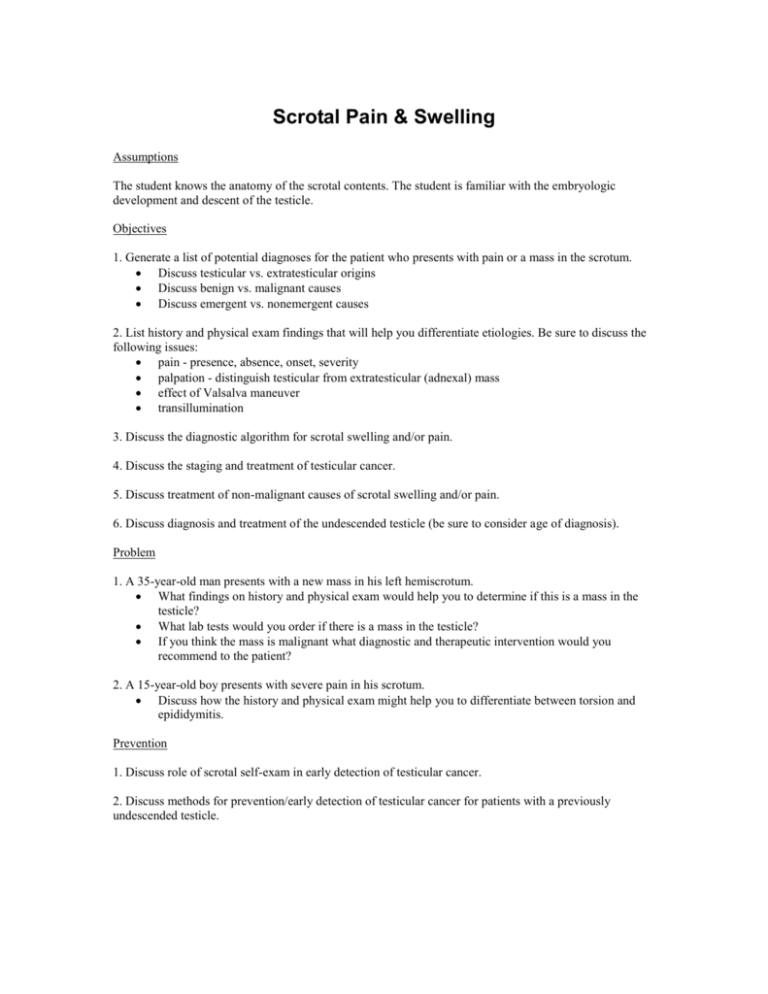
Scrotal Pain & Swelling Assumptions The student knows the anatomy of the scrotal contents. The student is familiar with the embryologic development and descent of the testicle. Objectives 1. Generate a list of potential diagnoses for the patient who presents with pain or a mass in the scrotum. Discuss testicular vs. extratesticular origins Discuss benign vs. malignant causes Discuss emergent vs. nonemergent causes 2. List history and physical exam findings that will help you differentiate etiologies. Be sure to discuss the following issues: pain - presence, absence, onset, severity palpation - distinguish testicular from extratesticular (adnexal) mass effect of Valsalva maneuver transillumination 3. Discuss the diagnostic algorithm for scrotal swelling and/or pain. 4. Discuss the staging and treatment of testicular cancer. 5. Discuss treatment of non-malignant causes of scrotal swelling and/or pain. 6. Discuss diagnosis and treatment of the undescended testicle (be sure to consider age of diagnosis). Problem 1. A 35-year-old man presents with a new mass in his left hemiscrotum. What findings on history and physical exam would help you to determine if this is a mass in the testicle? What lab tests would you order if there is a mass in the testicle? If you think the mass is malignant what diagnostic and therapeutic intervention would you recommend to the patient? 2. A 15-year-old boy presents with severe pain in his scrotum. Discuss how the history and physical exam might help you to differentiate between torsion and epididymitis. Prevention 1. Discuss role of scrotal self-exam in early detection of testicular cancer. 2. Discuss methods for prevention/early detection of testicular cancer for patients with a previously undescended testicle.

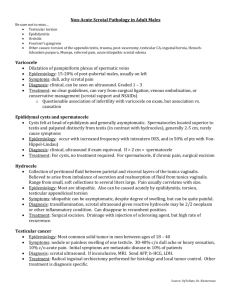
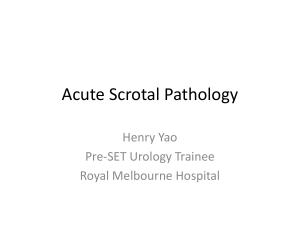
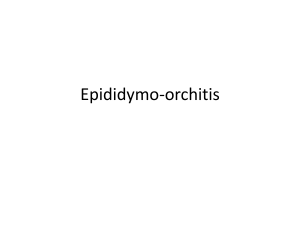
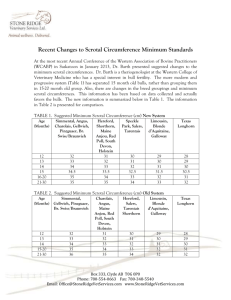
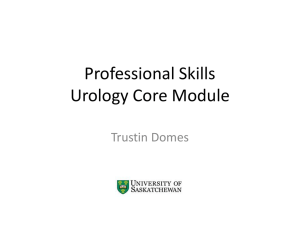

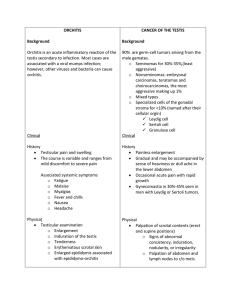
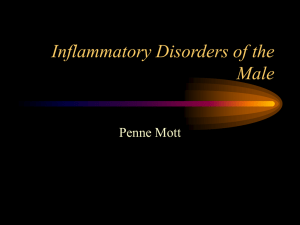

![[2015.114] Sonographic Imaging of Scrotal Emergencies Including](http://s3.studylib.net/store/data/008082656_1-f1115c11919231e1b74639be8e0c7a09-300x300.png)
